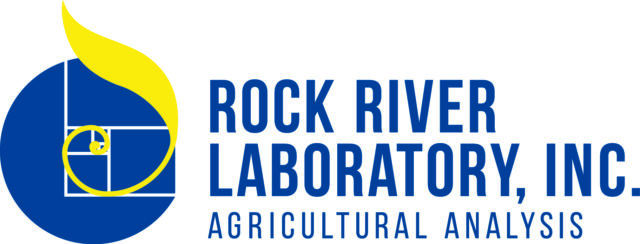In the nearly 80 years since it was enacted, the Agricultural Marketing Agreement Act (AMAA) has triggered more than its fair share of litigation, with a surprising number of disputes reaching the U.S. Supreme Court. In total, 22 supreme court cases have cited the AMAA, and no fewer than six directly related to its milk marketing order provisions.
The AMAA is the law authorizing the issuance and operation of the Federal Milk Marketing Orders, with which most readers will have some familiarity.
In addition to milk, however, the AMAA authorizes the USDA to issue marketing orders for a litany of other commodities including almonds, oranges, tomatoes and raisins.
In June, the Supreme Court issued a decision related to the raisin marketing order.
While not directly affecting the milk marketing orders, the decision and the discussion of the justices may give the dairy industry some pause in considering how the federal courts, as well as the general public, have come to view the overall effects of agricultural marketing orders and related measures.
The June decision in the case of Horne v. Department of Agriculture concerned a claim brought by the USDA against raisin growers for their failure to turn over part of their crop pursuant to the federal raisin marketing order.
Under that order, the supply of raisins on the market is controlled by limiting the amount of raisins producers may market and creating a “reserve” of production that is not placed into the open market.
The USDA fined the raisin growers $650,000 for non-compliance. The raisin growers attempted to claim in the lawsuit that the seizure of their raisins was unconstitutional as a taking of private property without just compensation. As a constitutional matter, the case made it to the Supreme Court.
The Supreme Court’s opinion did not decide whether the actions of the raisin order actually constitute an unconstitutional taking. It only held that the growers have a right to rebut the fines levied upon them as part of the USDA’s enforcement of the raisin order.
The unanimous decision sent the case back to the lower courts to hear the farmer’s rebuttal and for a decision on the legality of the fines levied.
Given that the Federal Milk Marketing Orders have no provisions akin to the raisin order’s reserve marketing requirements, what impact does this have on the dairy industry? To get a better feeling for the answer to this question, comments from the oral arguments in the lawsuit provide some insight.
Despite the fact that the issue before the court was merely the jurisdiction to hear the raisin handlers’ claims, the oral argument included a fair bit of discussion over the operation of the “reserved requirement.”
At one point in the argument, Justice Antonin Scalia characterized the choice to raisin handlers as, “Your raisins or your life.” Justice Scalia rebuffed the USDA’s argument that the handlers had a meaningful choice in turning over some form of property to the government.
Perhaps more important to the discussions taking place in recent months related to dairy policy are the comments from Justice Steven Breyer. In characterizing the raisin handlers’ claims, Justice Breyer said:
[The raisin handlers] think this whole raisin program is unconstitutional. What it does is it takes raisins that we grow – in effect throws them in the river. And in the ’30s, that was done to raise raisin prices.
And they think as a matter of policy that just hurts people by raising prices, and as a matter of constitutional law it takes raisins from some people that belong to them and uses them for this bad purpose.
... Now, I would think if all you told me was that and I knew nothing about all these statutes, I would say that’s the kind of claim that should be made in a federal district court, period, not the Court of Claims.
Because their government isn’t going to compensate them for anything. That’s against the whole point of the program. Either this program is valid or it isn’t. And if it isn’t, some authoritative set of courts should tell us that.
Justice Scalia concurred in Justice Breyer’s assertion that the entire structure of the marketing order does not contemplate any type of compensation for raisin growers.
While the court did not reach any decision as to whether the raisin marketing order does take property without just compensation, the questioning evidences some skepticism about its propriety.
For example, Justice Breyer was incredulous as to the functioning of the marketing order: “The just compensation, I take it, in the program is supposed to come from the fact that raisin prices go up.
But I can’t believe that Congress wanted the taxpayers to pay for a program that’s going to mean they have to pay higher prices as consumers.”
Similarly, Justice Elena Kagan offered the following possible tongue-in-cheek description of what the Supreme Court might do: “Mr. Palmore, what would be wrong ... with a disposition of this court that went something like this: Everybody agrees that this is not a jurisdictional issue, including the government, so they got that wrong. ... And now, the Ninth Circuit can go and try to figure out whether this marketing order is a taking or it’s just the world’s most outdated law.”
Enter the proposed Dairy Security Act.
Now, as I write this, Congress has yet to pass a definitive farm bill. The House is expected to take up the nutrition tile, which should pave the way for a conference of the House and Senate provisions.
Of course, that will reignite the discussion over the specifics of the dairy title and the price stabilization aspects of the Senate and House plans.
If the ultimate farm bill does include some sort of supply management component, the dairy industry will be placed in a situation where its program looks a bit more like the raisin marketing order than before.
While the stabilization provisions are drafted as operating outside of the Federal Milk Marketing Orders, per se, there will be a program that places certain producers in the position of reducing their marketings or not being paid for all that is produced.
There are a whole litany of differences between the Dairy Security Act’s stabilization operation and that of the raisin marketing order. Most importantly, any consideration of whether producers received “just compensation” will be an entirely different analysis. Yet, the programs will share a common goal and means for achieving that goal.
Substituting milk for raisins, the raisin handlers’ argument as described by Justice Breyer reads, “What it does is it takes [milk] that we [produce], in effect throws [it] in the river. And ... that was done to raise [milk] prices.”
In all fairness, the raisin program is compulsory, and the Dairy Security Act as now proposed is voluntary. Nevertheless, with this claim still to be decided by the federal courts, I think it is worth paying attention to.
Finally, the comments by Justice Breyer regarding Congress’s intent regarding the raisin program sounds quite a bit like the claims coming from the opponents of dairy price stabilization.
Recall that he said, “I can’t believe that Congress wanted the taxpayers to pay for a program that’s going to mean they have to pay higher prices as consumers.”
In the context of Justice Breyer’s comment, he was referring to the federal government compensating raisin producers for raisins not marketed. But how often has it been said that the Dairy Stabilization Act will operate in a similar fashion? Ultimately, this policy debate will have to be revisited. PD
Illustration by Mercedes Opheim.

Ryan Miltner
Attorney
The Miltner Law Firm LLC







